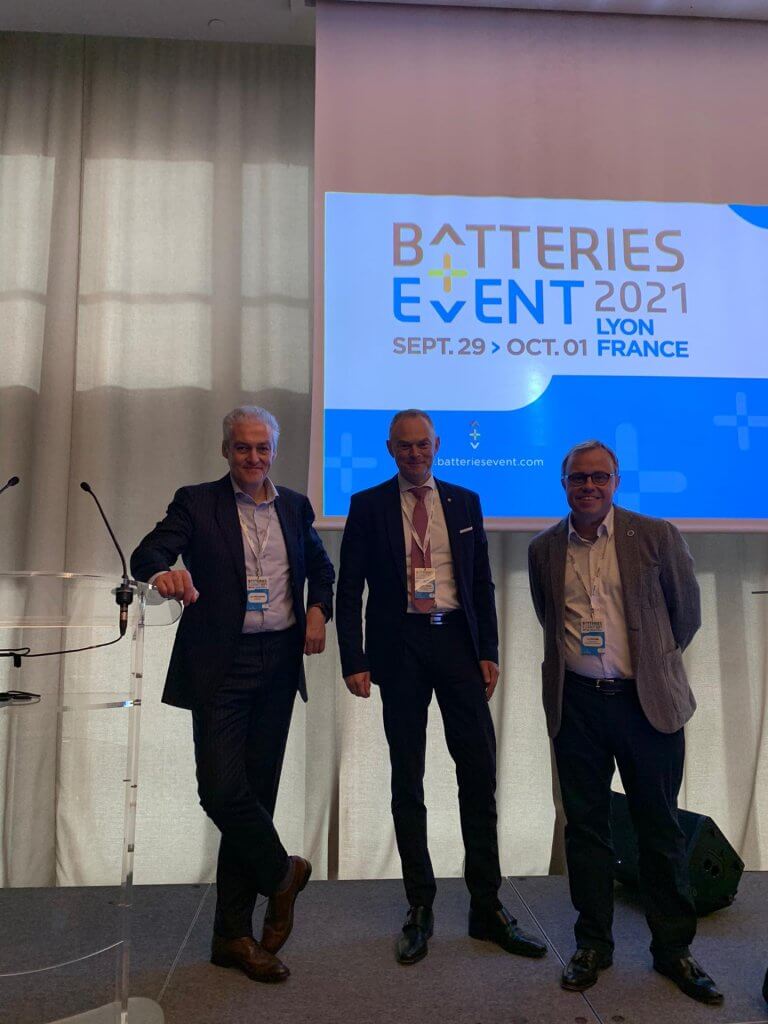

In January, a few members of CBI’s team visited eastern Pennsylvania to tour part of East Penn Manufacturing’s facility which produces over 500 types of batteries, including a large number of lead battery designs. Indeed, East Penn produces gigawatt hours of batteries every year – and is a real-world, established gigafactory.
Norbert Maleschitz, East Penn’s Executive Vice President & Chief Operating Officer, shared his excitement about the future of lead batteries. With innovation as part of their DNA, he explained that East Penn is pushing its technology further through an ongoing investment into R&D and Engineering. As lead batteries’ role in meeting future energy demands grows, Maleschitz and East Penn support improvements in manufacturing because they are key for enhancing technical solutions to both customers and the industry.
Dr. Matt Raiford, CBI’s Senior Technical Manager, inquired about the projects and enhancements underway at East Penn. There are several activities focused on improving electrode design, material innovations, and overall battery designs. The results will be a key part in continued performance improvements for lead battery technology and vital for ensuring that these batteries can meet future energy storage requirements.
CBI also had the chance to discuss and view some ongoing project work at the Briedegam-Miksiewicz Innovation Center R & D Department. Dr. Carl Telford, CBI’s Senior Research and Innovation Manager, met with Perry Kramer, Director of Technology, Research and Development at the Center and was able to look at how they are working with New Zealand-based development partner, ArcActive, to fully take advantage of the development of this novel technology.
Perry explained how ArcActive Technology features a carbon felt that replaces the standard lead grid structure of the negative current collector, enabling significant increases in charge acceptance. A battery featuring this technology helps to lower emissions in micro hybrid vehicle applications, and also improves the charging characteristics of the traditional 12 V lead batteries used in electric vehicles (these ‘auxiliary’ batteries power a vehicle’s accessories and critical safety functions).
Perry shared an overview of another large project that is focused on increasing cycle life. Bi-polar battery technology offers the potential to increase cycle life by three times over standard Absorbed Glass Mat (AGM) products while also reducing weight. The applications of this technology could range from use in automotive to reserve power and motive power, as well as other energy storage applications.
Telford and the rest of the team were particularly interested in East Penn’s work related to future manufacturing processes for lead batteries. Manufacturing needs to be very precise and predictable to enable the construction of a commercially successful, reliable, and dependable lead-battery product. East Penn has a large capability in manufacturing engineering and automation. Further innovations in manufacturing will provide the right mechanisms for extending battery longevity in future applications.
Finally, the team toured East Penn’s smelter and recycling facility. Lead batteries are a fantastic example of a product designed for complete end of life recycling, and currently over 99% of lead batteries are collected and recycled in North America. Their facility recycles everything including the acid. The facility recycles 182 million pounds of lead on an annual basis. In addition, they have a process in place to remove nitrogen oxide exhaust or off-gases and use them to create other products that benefit an adjacent industry.
Overall, CBI greatly appreciated the tour of East Penn to learn how their facilities’ efforts and leadership truly make the lead battery such an important contributor to global energy storage and a model for a more circular economy.
For the first time at the Batteries Event, held in September 2021 and organized by Avicenne Energy, there was a dedicated session for lead batteries. This is another major step for the industry demonstrating how this technology continues to evolve and is key to the current discussions within the energy sector.
Co-organized by CBI and EUROBAT, the session ‘Driving sustainable growth through LEAD BATTERY innovation’ brought up significant topics such as decarbonisation, circular economy and the work of the lead industry to upgrade and innovate for current applications such as clean energy and e-mobility.
Opening the session was EUROBAT’s Director Communications & Stewardship, Gert Meylemans, who noted that both lead and lithium will still be the dominant chemistries in the next decade.
Focusing on the numbers, lead-based technology will remain almost exclusively the preferred technology for 12V automotive applications, while continuing to be the dominant technology for UPS applications (Uninterruptible Power Supply) providing 90% of global demand and increasing by 5.5 GWh by 2030.
Our very own Research and Innovation Manager Dr Carl Telford introduced our recently launched Technical Roadmap to the audience and explored the funding opportunities for the industry within the EU.

CBI’s new Technical Roadmap is an expansive document setting out key research priorities for the industry for all applications using lead batteries. With a special section dedicated to energy storage systems solutions where lead batteries play a major role – from utility and renewable energy storage projects to hybrid solutions – the opportunities to enhance lead batteries through research and innovation have huge potential.
Dr Christian Rosenkranz from Clarios (also CBI’s Chairman) explored both CBI and EUROBAT Roadmaps, highlighting the “strong innovation potential of all battery technologies” and their contribution to the EU Green Deal, Fit-for-55 and net-zero pollution goals, as they:
To conclude this fantastic session, Dr Bernhard Riegel from HOPPECKE explored the innovation potential of electrochemical storage systems for industrial applications, an “ongoing process” for established technologies. High recyclability, low investment cost and low safety requirements were pointed out as the main advantages of the lead-based technology for the upcoming years.
The Batteries Event 2021 has ended but our work is now more exciting than ever with all the future opportunities for the technology and the innovation to come, driven by CBI’s Technical Roadmap.